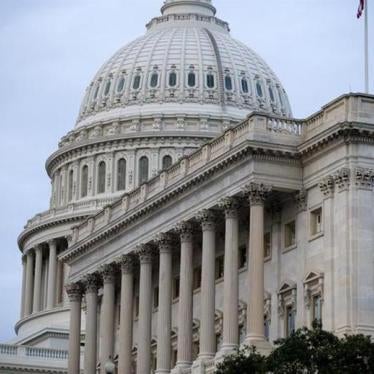Chairman Richard Durbin
Senate Judiciary Committee
224 Dirksen Senate Office Building
Washington, D.C. 20510
Senator Charles Grassley, Ranking Member
Senate Judiciary Committee
224 Dirksen Senate Office Building
Washington, D.C. 20510
Chairman Jerrold Nadler
House Judiciary Committee
2138 Rayburn House Office Building
Washington, D.C. 20515
Rep. Jim Jordan, Ranking Member
House Judiciary Committee
2138 Rayburn House Office Building
Washington, D.C. 20515
CC: Chairwoman Patty Murray, Senate HELP Committee; Ranking Member Richard Burr, Senate HELP Committee; Chairman Frank Pallone, House Energy and Commerce Committee; Ranking Member Cathy McMorris Rodgers, House Energy and Commerce Committee
Dear Chairman Durbin, Chairman Nadler, Ranking Member Grassley and Ranking Member Jordan:
The more than 100 undersigned organizations write to urge Congress and the Biden administration to let the Trump administration temporary “class-wide” emergency scheduling of fentanyl-related substances expire in May 2021. Class-wide scheduling would exacerbate pretrial detention, mass incarceration and racial disparities in the prison system, doubling down on a fear-based, enforcement-first response to a public health challenge. As we approach the 50-year milestone of President Nixon’s announcement of the War on Drugs, there is ample evidence that these unscientific policies destroy communities, entrench racial disparities, and do nothing to reduce drug supply or demand. Lawmakers should instead support legislation grounded in public health and evidence-based approaches to illicit fentanyl-related overdose deaths.
We must learn from the lessons of the past: It is time for Congress and the Biden administration to embrace a public health approach to drug use. The United States is in the midst of a deadly overdose crisis that claims tens of thousands of lives each year.[1] In the past few years, synthetic drugs such as fentanyl and its analogues have been responsible for overdose deaths in many parts of the country.[2] These overdose deaths form a part of a broader wave of mortality associated with unemployment, alcohol poisoning and suicide, circumstances related to working class economic decline and mental health challenges.[3] Focusing on drug interdiction does not address the root cause of these overdoses. Skyrocketing prosecutions and criminal penalties have done nothing to stem the tide of these deaths, or to reduce the supply of harmful substances in our country.[4] Relying on jails to force individuals into painful, involuntary, and often unsafe withdrawal is not the solution. Now, more than ever, policymakers must turn to evidence and science, not fear, to find answers.
Our country is repeating past missteps when it comes to policy responses to fentanyl and its analogues. In the 1980s, policymakers enacted severe mandatory minimums for small amounts of crack cocaine in response to media headlines and law enforcement warnings that perpetuated mythology and fear. In the ensuing decades, people of color have been disproportionately incarcerated and sentenced to mandatory minimum sentences for small amounts of crack cocaine. The emergence of fentanyl-related substances in recent years has fueled similar waves of alarmist media and law enforcement headlines that are informed by mythology rather than science.[5] Any further extension of the Trump administration’s class-wide scheduling policy threatens to repeat past missteps with crack cocaine that policymakers are still working to rectify.
In 2018, the Trump administration chose to implement a hardline anti-science policy of class- wide scheduling of fentanyl analogues rather than pursue evidence and health-based approaches to fentanyl-related overdose deaths. This policy placed on Schedule I of the federal Controlled Substances Act an entire class of substances that has chemical properties similar to fentanyl. This move expands the application of existing severe mandatory minimum sentencing laws enacted by Congress in the 1980s to a newly scheduled class of fentanyl-related compounds. For example, just a trace amount of a fentanyl analogue in a mixture with a combined weight of 10 grams—10 paper clips—can translate into a five-year mandatory minimum, with no evidence needed that the seller even knew it contained fentanyl. In addition, current laws impose a statutory maximum sentence of 20 years for just a trace amount of a fentanyl analogue in a mixture with a combined weight of less than 10 grams.[6]
Between 2015 and 2019, prosecutions for federal fentanyl offenses increased by nearly 4,000%, and fentanyl-analogue prosecutions increased a stunning 5,000%.[7] There are significant racial disparities in these prosecutions, with people of color comprising almost 75% of those sentenced in fentanyl cases in 2019.[8] This holds true for fentanyl analogues, for which 68% of those sentenced were people of color.[9] In addition, more than half of all federal fentanyl-analogue prosecutions in 2019 involved a street-level seller or other minor role; only 10.3% of these cases involved the most serious functions.[10] Congress and the Biden administration should be wary of expanding the reach of these penalties by adopting a policy explicitly designed to expedite drug prosecutions and increase penalties.[11]
Class-wide scheduling excises public health and science from drug control and will lead to over-criminalization. Under the class-wide control, any offense involving a fentanyl-related substance is subject to federal criminal prosecution, even if the substance in question has no potential for abuse. In February of 2018, the DEA used its emergency scheduling authority to preemptively place an unknown number of fentanyl-related substances—whether in existence or not[12]—onto Schedule I.[13] That scheduling action placed any substance with a certain chemical structure on Schedule I.[14] But chemical structure alone cannot predict how a drug will affect the human brain,[15] and not all fentanyl analogues are harmful. “Some analogues, like acetyl fentanyl, are less potent than fentanyl; others, like carfentanil, are many times more potent; and still others, like benzylfentanyl, are believed to be essentially biologically inactive.”[16] However, the same severe penalties apply, including the harsh mandatory minimums, regardless of the potency and purity of a particular fentanyl-related substance.
Customarily, the Attorney General consults with the Department of Health and Human Services (HHS) and the Food and Drug Administration (FDA),[17] to confirm a substance’s potential for abuse—and lack of therapeutic potential—before it is permanently placed in Schedule I.[18] But, in the case of the 2018 temporary scheduling order on fentanyl-related substances, rather than allow for the completion of scientifically and medically-based proceedings, the DEA and the Trump administration persuaded Congress to create an exception to the ordinary rule by enacting a bill to extend the temporary scheduling of fentanyl-related substances until May 6, 2021.[19] And now, proponents of the class-wide approach are once again asking Congress to grant DEA the authority to schedule all fentanyl-related substances permanently. We oppose any initiatives that would continue to extend class-wide scheduling, whether temporarily or permanently.
Excising science and public health from the drug control process would set a harmful precedent for the criminal legal system and public health. There is simply no scientific basis for this approach, and no precedent for its sweeping, permanent grant of authority. DEA is not equipped to assess the abuse potential or the therapeutic value of substances, particularly when it comes to emerging substances unknown to science. Our communities will have to bear the consequences of such a process, including the application of mandatory minimum sentences, for persons who play bit roles in distribution of even trace amounts of a fentanyl-related substance.[20] Giving the DEA broad authority over scheduling would also unduly water down the evidence required for a conviction, depriving accused persons of the opportunity to mount a meaningful defense, and undercutting the goals of criminal legal reform.
An extension of the ban is unnecessary because harmful fentanyl analogues are illegal with or without classwide scheduling. DOJ spokespersons repeatedly, erroneously, have claimed that failure to enact class-wide scheduling would “legalize” harmful fentanyl analogues. On April 2019, a DEA spokesperson stated that “...any fentanyl substances not already permanently placed in Schedule I or II would fall off the list and technically not be an illegal substance.”[21] Later, in January of 2020, then-Attorney General William P. Barr authored an op-ed in the Washington Post in which he repeated the misinformation that, if fentanyl-related substances were not scheduled or the emergency scheduling order was allowed to expire, the drugs would become legal.[22] To be clear, these statements were then—and are still now—false. In fact, the 2018 emergency scheduling order itself correctly noted that trafficking of fentanyl analogues is “actually illegal as persons who do so can be prosecuted using the controlled substance analogue provisions of the CSA.”[23]
In addition, the Department of Justice and DEA have claimed that the Analogue Act is unduly complex and burdensome. But the Analogue Act appropriately requires the government—when it brings the force of federal criminal penalties against an individual—to prove that a novel substance is actually harmful or was intended to be harmful. If the substance involved is harmful, that should not be a difficult burden for the government to meet. Nor do those burdens obstruct DOJ’s efforts to prosecute individuals: DOJ has acknowledged its “very good track record in Analogue Act prosecutions.”[24] Science matters, and due process is not a mere inconvenience to sweep aside. Overcoming an individual’s presumption of innocence is not intended to be convenient for the government. The Analogue Act requires the government to prove that a novel substance meets the Controlled Substance Act’s definition of “controlled substance analogue” before that person can be convicted and punished. Congress carefully designed the elements of that definition to secure convictions for dangerous novel substances while shielding harmless conduct from criminal sanctions.[25]
Class-wide scheduling hurts public health and scientific research. Giving the DEA broad, “class-wide” powers to schedule fentanyl analogues without HHS oversight could also undermine scientific research critical to finding solutions to the overdose crisis. In a July 2019 letter to HHS, bipartisan members of the Senate Judiciary Committee warned that the same barriers to research that scientists encounter when attempting to study Schedule I drugs would apply to substances added by a class-wide ban.[26] Senate Judiciary Committee members further warned that “the failure to engage necessary health experts vests far too much authority to a law- enforcement agency and may result in action that will deter valid, critical medical research aimed at responses to the opioid crisis, including efforts to identify antidotes to fentanyl-analogue overdoses and improved treatment outcomes.”[27] Similarly, in her January 2020 statement before the Subcommittee on Crime, Terrorism, and Homeland Security of the House Judiciary Committee, Dr. Sandra Comer, the public policy officer for the College on Problems of Drug Dependence, strongly recommended that any legislation on scheduling synthetic opioids should involve HHS’s science-based agencies, specifically the National Institute on Drug Abuse and the FDA.[28] We are gravely concerned that efforts encouraged by the DEA would take away HHS oversight essential to excluding substances that should not be scheduled. Substances that have no psychoactive value but are important to research could be inadvertently added to Schedule I without proper HHS input, needlessly increasing both the burdens to research and the effects of criminalization.
The expiration of class-wide scheduling is an opportunity for the Biden administration and Congress to make good on a commitment to end mandatory minimums and embrace a public health approach.[29] The classwide scheduling discussion allows Congress and this administration the opportunity to choose a new path on drug policy. The Biden administration has expressed support for ending mandatory minimums. Allowing this policy to expire aligns with Biden’s stated support of ending mandatory minimums and treating drugs as a public health issue. Lawmakers should instead support legislation grounded in public health and harm reduction. Some health-centered policy provisions lawmakers should prioritize include the following: supporting harm reduction interventions such as syringe service programs; enacting a federal Good Samaritan statute; removing cost and access barriers to naloxone and effective forms of opioid use disorder treatment such as buprenorphine and methadone[30]; and improving public health surveillance of fentanyl analogues and overdose cases.
We share your concern about fentanyl-related deaths and support effective health-based approaches to mitigating this public health crisis, but class-wide scheduling merely repeats the mistakes of the past by exacerbating our incarceration problem. We welcome continued dialogue with you and your staff about how to move forward on this important topic. However, we must reiterate our firm opposition to “class-wide” emergency scheduling, whether temporary or permanent. Thank you for your time and attention to this matter. Please contact Grant Smith, Deputy Director, DPA at gsmith@drugpolicy.org or Patricia Richman, National Sentencing Resource Counsel, Federal Public and Community Defenders at Patricia_Richman@fd.org; for questions or concerns.
Sincerely,
A Little Piece Of Light (NY)
AIDS Alabama (AL)
AIDS United
Alliance for Living (CT)
American Civil Liberties Union
Any Positive Change, Inc. (CA)
Asian American Drug Abuse Program, Inc. (CA)
AMERSA (RI)
Autistic Self Advocacy Network
The Bail Project
Baltimore Harm Reduction Coalition (MD)
Being Alive LA (CA)
Black and Pink Massachusetts (MA)
Brennan Center for Justice
Bridge To The Mountains (PA)
Center For Employment Opportunities
Center for Health and Justice Transformation (RI)
Center for Justice Research at Texas Southern University (TX)
Center for Popular Democracy
Chicago Drug Users' Union (IL)
College and Community Fellowship (NY)
Community Alliance on Prisons (HI)
Community Health Project Los Angeles (CA)
Congregation of Our Lady of Charity of the Good Shepherd, US Provinces (MD)
Church of Scientology National Affairs Office
CURE (Citizens United for Rehabilitation of Errants)
Down Home NC (NC)
Dream Corps JUSTICE
Drug Policy Alliance
Due Process Institute
Fair and Just Prosecution
FAMM
Family and Medical Counseling Services, Inc. (DC)
Federal Public and Community Defenders
Friends Committee on National Legislation
GLIDE (CA)
GoodWorks: North Alabama Harm Reduction (AL)
Harm Reduction Services (CA)
Harm Reduction Sisters (NC)
Hawaii Health and Harm Reduction Center (HI)
Health in Justice Action Lab (MA)
Health Policy Network, LLC (PA)
HealthRight360 (CA)
Hep Free Hawaii (HI)
HEPPAC (CA)
HIPS (DC)
HIV Education and Prevention Project of Alameda County HEPPAC (CA)
HIV/HCV Resource Center (NC)
Human Rights Watch
Interfaith Action for Human Rights
Justice Roundtable
Justice Strategies
Latino Justice PRLDEF
Law Enforcement Action Partnership
Live4Lali (IL)
LSF Services (NY)
The Leadership Conference on Civil and Human Rights
Legal Action Center
Maine Access Points (ME)
Maine People's Alliance (ME)
The Mountain Center (NM)
NAACP
National Action Network
National Advocacy Center of the Sisters of the Good Shepherd
National Alliance of State and Territorial AIDS Directors (NASTAD)
National Association of Criminal Defense Lawyers
National Association of Social Workers
National Center for Advocacy and Recovery for Behavioral Health
National Center for Lesbian Rights
NCADD-MD (MD)
National Council of Churches
National Harm Reduction Coalition
National Health Care for the Homeless Council
National Juvenile Justice Network
National Organization for Women
National Viral Hepatitis Roundtable
NEXT Harm Reduction (NY)
NETWORK Lobby for Catholic Social Justice
Opioid Network (NY)
People’s Action
Philadelphia Overdose Prevention Initiative (PA)
Prevention Point Pittsburgh (PA)
QC Harm Reduction (IL)
Rights & Democracy (VT)
River Valley Organizing (OH)
St. James Infirmary (CA)
The Sentencing Project
Showing Up for Racial Justice Ohio (NY)
SOAR WV (WV)
Stopthedrugwar.org
Students for Sensible Drug Policy
Texas Drug User Health Alliance (TX)
TN State Conference NAACP (TN)
Treatment Action Group
Treatment Communities of America
Truth Pharm (NY)
Tzedek Association
Unlimited Sciences (CO)
Urban Survivors Union (IN)
Vera Institute of Justice
VOCAL-NY (NY)
Washington Office on Latin America
Witness to Mass Incarceration, Inc
[1] See https://science.sciencemag.org/content/sci/361/6408/eaau1184/F2.large.jpg from Source: Changing dynamics of the drug overdose epidemic in the United States from 1979 through 2016 Hawre Jalal, Jeanine M. Buchanich, Mark S. Roberts, Lauren C. Balmert, Kun Zhang, Donald S. Burke; Science 21 Sep 2018: Vol. 361, Issue 6408, eaau1184
[2] Nat’l Inst. of Drug Abuse, Overdose Death Rates (last updated Jan. 29, 2021), https://www.drugabuse.gov/drug- topics/trends-statistics/overdose-death-rates.
[3] Carol Graham, America’s crisis of despair: A federal task force for economic recovery and societal well-being, Brookings, (Feb. 10, 2021), https://www.brookings.edu/research/americas-crisis-of-despair-a-federal-task-force-for- economic-recovery-and-societal-well-being/.
[4] Centers for Disease Control and Prevention, National Center for Health Statistics, National Vital Statistics System, Provisional Drug Overdose Death Counts, 12 Month-ending Provisional Number of Drug Overdose Deaths by Drug or Drug Class January 2015 through July 2020, Synthetic opioids excluding methadone (T40.4), https://www.cdc.gov/nchs/nvss/vsrr/drug-overdose-data.htm; Drug Alcohol Depend. 2020 Nov 1; 216: 108314, Steep increases in fentanyl-related mortality west of the Mississippi River: Recent evidence from county and state surveillance, Chelsea L. Shover, Titilola O. Falasinnu, Candice L. Dwyer, Nayelie Benitez Santos, Nicole J. Cunningham, Rohan B. Freedman, Noel A. Vest, and Keith Humphreys, https://www.ncbi.nlm.nih.gov/pmc/articles/PMC7521591 ; National Public Radio, “We Are Shipping To The U.S.': Inside China's Online Synthetic Drug Networks,” Emily Fang, November 17, 2020, https://www.npr.org/2020/11/17/916890880/we-are-shipping-to-the-u-s-china-s-fentanyl-sellers-find-new-routes-to- drug-user
[5] Int J Drug Policy. 2020 Dec; 86: 102951. Fentanyl panic goes viral: The spread of misinformation about overdose risk from casual contact with fentanyl in mainstream and social media; Leo Beletsky, Sarah Seymour, Sunyou Kang, Zachary Siegel, Michael S. Sinha, Ryan Marino, Aashka Dave, and Clark Freifelde; “You Can’t Overdose on Fentanyl by Touching It,” Vice, March 21, 2018, Maia Szalavitz; American College of Medical Toxicology, “Fentanyl Exposure in the News (Website),” https://www.acmt.net/Fentanyl_Exposure_in_the_News.html
[6] See generally Brian T. Yeh, Cong. Research Serv., RL30722, Drug Offenses: Maximum Fines and Terms of Imprisonment for Violation of the Federal Controlled Substances Act and Related Laws (Jan. 20, 2015), https://fas.org/sgp/crs/misc/RL30722.pdf.
[7] U.S. Sent. Comm’n, Fentanyl and Fentanyl Analogues: Federal Trends and Trafficking Patterns (Jan. 2021), at 24 (hereinafter “USSC Fentanyl Report”), https://www.ussc.gov/sites/default/files/pdf/research-and- publications/research-publications/2021/20210125_Fentanyl-Report.pdf.
[8] See U.S. Sent. Comm’n, Fentanyl and Fentanyl Analogues: Federal Trends and Trafficking Patterns (Jan. 2021), at 24 (hereinafter “USSC Fentanyl Report”), https://www.ussc.gov/sites/default/files/pdf/research-and- publications/research-publications/2021/20210125_Fentanyl-Report.pdf.
[9] Id.
[10] U.S. Sent. Comm’n, Fentanyl and Fentanyl Analogues: Federal Trends and Trafficking Patterns (Jan. 2021), at 28 (Summation of Street-Level Dealer; Courier/Mule; Renter/Storer; Enabler; and User Offender Functions at 51.5%; Summation of most serious functions, importer/high-level distributor and leader/organizer at 10.3%) (hereinafter “USSC Fentanyl Report”), https://www.ussc.gov/sites/default/files/pdf/research-and- publications/research-publications/2021/20210125_Fentanyl-Report.pdf.
[11] See Dep’t of Justice, U.S. Attorney Scott Brady Statement on Expiration of Fentanyl Analogue Emergency Scheduling, (Jan. 29, 2020) (“The emergency scheduling—limited to a two-year period—also made the fentanyl analogues subject to still statutory mandatory minimum sentences.”), https://www.justice.gov/usao-wdpa/pr/us- attorney-scott-brady-statement-expiration-fentanyl-analogue-emergency-scheduling
[12] See Temporary Scheduling Order (“It bears emphasis, however, that even in the absence of a future publication by DEA specifically identifying such a substance, the substance is controlled by virtue of this temporary scheduling order if it falls within the definition of fentanyl-related substance.”).
[13] Drug Enforcement Admin., Press Releases, U.S. Drug Enforcement Agency Emergency Schedules All Illicit Fentanyls In An Effort to Reduce Overdose Deaths (Feb. 7, 2018), https://www.dea.gov/press- releases/2018/02/07/us-drug-enforcement-administration-emergency-schedules-all-illicit.
[14] See Dep’t of Justice, Drug Enforcement Admin., Schedules of Controlled Substances: Temporary Placement of Fentanyl-Related Substances in Schedule I, 83 Fed. Reg. 25, 5,188 (Feb. 6, 2018) (codified at 21 CFR Part 1308) (hereinafter “2018 Temporary Scheduling Order”).
[15] See Fentanyl Analogues: Perspectives on Classwide Scheduling: Hearing Before the Subcomm. on Crime, Terrorism, and Homeland Security of the H. Comm. on the Judiciary, 116th Cong. 4 (Testimony of Dr. Sandra D. Comer, Professor of Neurobiology (in Psychiatry), Columbia University Irving Medical Center, New York State Psychiatric Institute) (Jan. 28, 2020), https://docs.house.gov/meetings/JU/JU08/20200128/110392/HHRG-116- JU08-Wstate-ComerS-20200128.pdf.
[16] Kemp Chester, Assoc. Dir., Nat’l Heroin Coordination Grp., Off. of Nat’l Drug Control Pol’y, Response to Questions for the Record Following Hearing Entitled, The Countdown: Fentanyl Analogues & the Expiring Emergency Scheduling Order to S. Comm. on the Judiciary (June 4, 2019) at 3, https://www.judiciary.senate.gov/imo/media/doc/Chester%20Responses%20to%20QFRs1.pdf.
[17] See 21 U.S.C. 811(b).
[18] See 21 U.S.C. 811(h).
[19] See Pub. L. No. 116-114, 134 Stat. 103 (2020).
[20] Cite 841, Scott Brady.
[21] See Erin Durkin, DEA’s Plea to Congress: Permanently Ban Fentanyl Substances, Nat’l J. Daily Extra (Apr. 21, 2019).
[22] See William P. Barr, William Barr: Fentanyl Could Flood the Country Unless Congress Passes this Bill, Wash. Post, (Jan. 10, 2020), https://www.washingtonpost.com/opinions/william-barr-congress-pass-this-bill-so-we-can- attack-the-onslaught-of-illegal-fentanyl/2020/01/10/cbb8ccdc-33cb-11ea-a053-dc6d944ba776_story.html. See also: Statement of the U.S. Department of Justice, Amanda Liskamm, Director, Opioid Enforcement and Prevention Efforts, Office of the Deputy Attorney General, and, Greg Cherundolo, Chief of Operations, Office of Global Enforcement, Drug Enforcement Administration, Before the Committee on the Judiciary, For a Hearing Entitled “The Countdown: Fentanyl Analogues & the Expiring Emergency Scheduling Order,” June 4, 2019, p. 2, https://www.judiciary.senate.gov/imo/media/doc/Liskamm-Cherundolo%20Joint%20Testimony.pdf; Statement of the U.S. Department of Justice, Amanda Liskamm, Director, Opioid Enforcement and Prevention Efforts, Office of the Deputy Attorney General, and, Tim McDermott, Assistant Administrator, Diversion Control Division, Drug Enforcement Administration, Before the Committee on the Judiciary, United States Senate, For a Hearing Entitled “Tackling the Opioid Crisis: A Whole-of-Government Approach,” December 17, 2019, p. 8, https://www.judiciary.senate.gov/imo/media/doc/Liskamm-McDermott%20Testimony.pdf; Statement of the U.S. Department of Justice, Amanda Liskamm, Director, Opioid Enforcement and Prevention Efforts, Office of the Deputy Attorney General, Before the Committee on the Judiciary, Subcommittee on Crime, Terrorism, and Homeland Security, United States House of Representatives, For a Hearing Entitled “Fentanyl Analogues: Perspectives on Classwide Scheduling,” January 28, 2020, p. 2, https://docs.house.gov/meetings/JU/JU08/20200128/110392/HHRG-116-JU08-Wstate-LiskammA-20200128.pdf
[23] 83 FR 5188, Schedules of Controlled Substances: Temporary Placement of Fentanyl-Related Substances in Schedule, Drug Enforcement Administration, February 6, 2018, see https://www.federalregister.gov/d/2018-02319/p-14
[24] Statement of the U.S. Department of Justice, Amanda Liskamm, Director, Opioid Enforcement and Prevention Efforts, Office of the Deputy Attorney General, and, Greg Cherundolo, Chief of Operations, Office of Global Enforcement, Drug Enforcement Administration, Before the Committee on the Judiciary, For a Hearing Entitled “The Countdown: Fentanyl Analogues & the Expiring Emergency Scheduling Order,” June 4, 2019, p. 5, https://www.judiciary.senate.gov/imo/media/doc/Liskamm-Cherundolo%20Joint%20Testimony.pdf
[25] Butler Test. at 9-10 (summarizing legislative history of the Analogue Act, including consideration by Congress of testimony from the American Chemical Society).
[26] See Letter from Senators Richard J. Durbin, Michael S. Lee, Sheldon Whitehouse, Amy Klobuchar, Christopher A. Coons, Mazie K. Hirono, Cory A. Booker, Kamala, D. Harris to The Hon. Alex M. Azar II, Secretary, U.S. Dep’t of Health and Human Services (Jul. 10, 2019), https://www.durbin.senate.gov/imo/media/doc/Letter%20to%20DOJ%20HHS%207.10.pdf.
[27] Id.
[28] See Statement of Sandra D. Comer, Ph.D., Before the Subcomm. on Crime, Terrorism, and Homeland Security of the House Comm. on the Judiciary, Washington, D.C. (Jan. 28, 2020). See also: Letter from the American Society for Pharmacology and Experimental Therapeutics (ASPET) to House Judiciary Committee dated February 4, 2020 regarding classwide scheduling of fentanyl analogues, https://www.aspet.org/docs/default-source/advocacy- files/aspet-fentanyl-classwide-scheduling-letter.pdf?sfvrsn=4db79cd2_0
[30] See Support, Treatment, and Overdose Prevention of Fentanyl Act of 2021: https://www.congress.gov/bill/117th-congress/house-bill/2366; Mainstreaming Addiction Treatment Act (H.R. 1384/S.445) https://www.congress.gov/bill/117th-congress/house-bill/1384 and https://www.congress.gov/bill/117th-congress/senate-bill/445; TREATS Act (S. 340) https://www.congress.gov/bill/117th-congress/senate-bill/340







